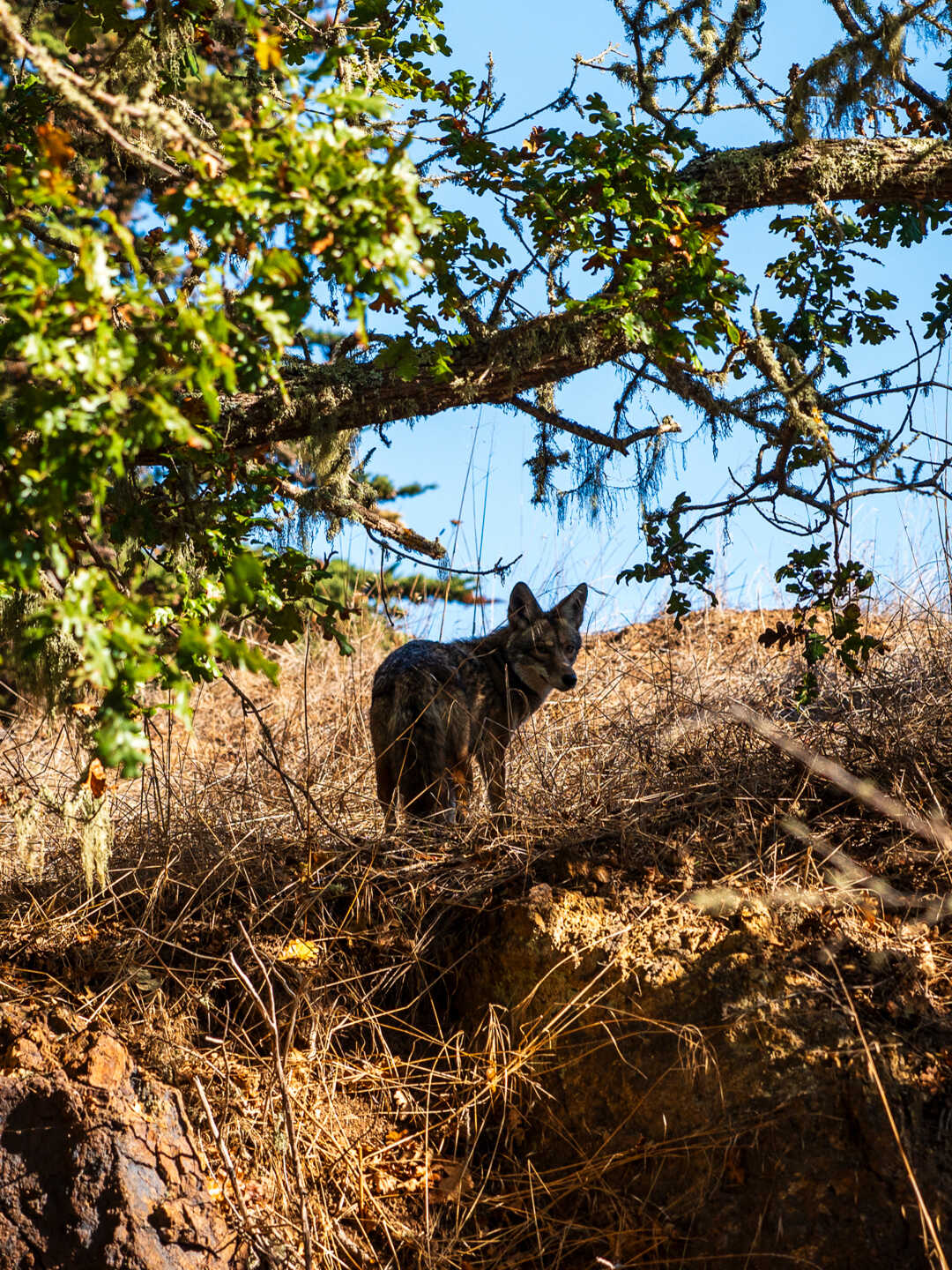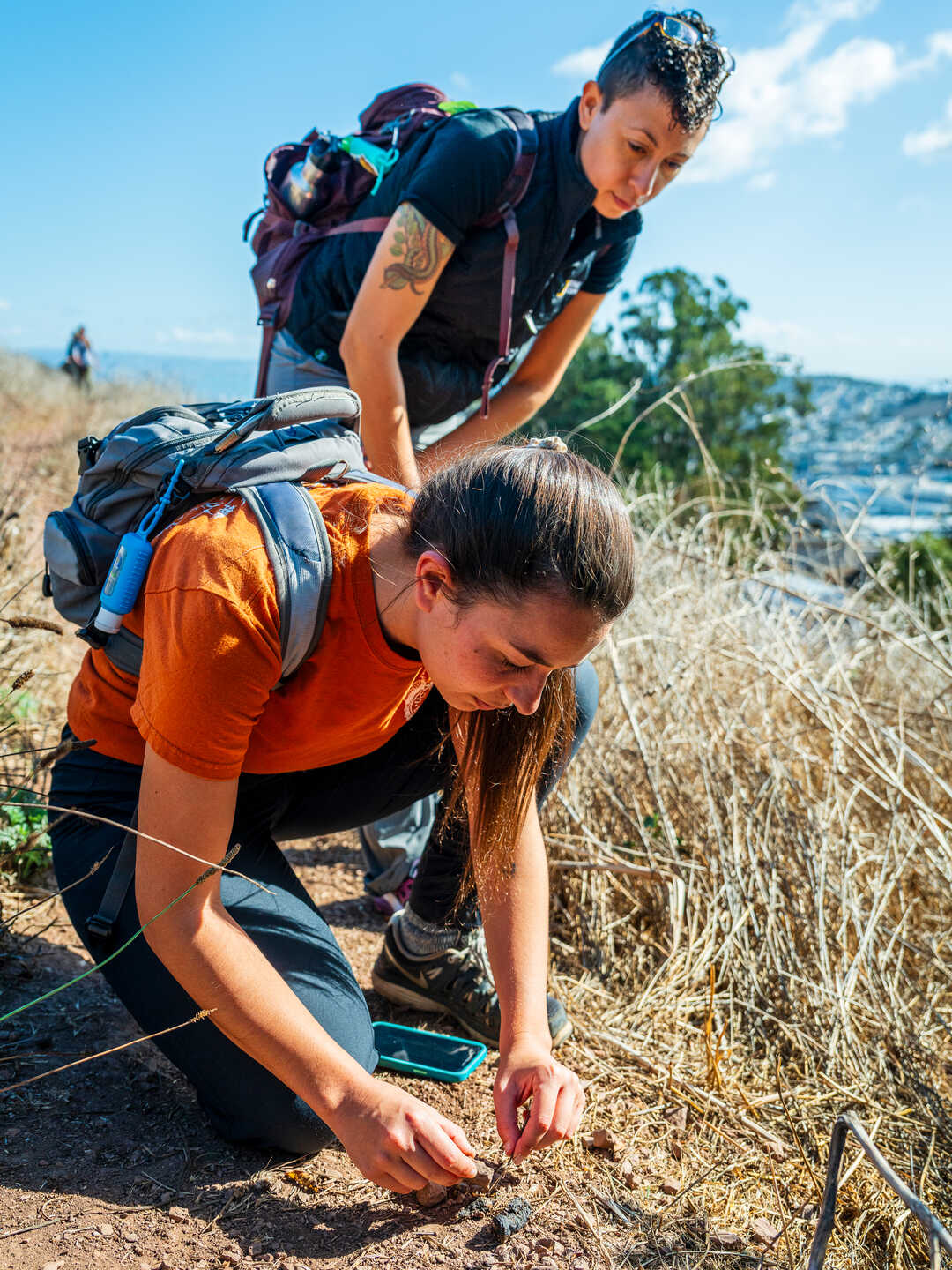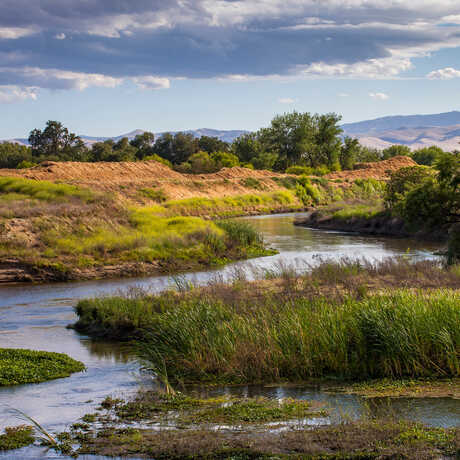Life After Death: A Coyote Specimen’s Journey

Coyotes: You’ve seen them prowling through the park. You’ve heard their eerie nighttime howls. You’ve read about them snatching housepets. But did you know they’ve also lived in California for over half a million years and are a vital part of Bay Area ecosystems?
In developing content for the “Connected Cities” section of our new California: State of Nature exhibition, I wanted to highlight urban species that have a complex relationship with humans. In San Francisco, perhaps no species embodies this complexity better than coyotes. Considered pests by many but vital for pest control, utterly wild but uncannily similar to our domesticated companions, coyotes are charismatic contradictions.
When it came time to research coyotes and source a specimen for the exhibition, we knew just where to look.

In June 2023, a juvenile male coyote about 11 months old was struck and killed by a car on Portola Drive in the Diamond Heights neighborhood of San Francisco. Sadly, this is an all-too-common occurrence. Vehicle strikes killed 26 coyotes in San Francisco in 2021—about 25% of their total estimated population in the city—and are the largest single cause of death for urban coyotes. A stretch of Interstate 280 on the Peninsula is California’s deadliest highway for wildlife overall, claiming 302 mountain lions between 2016 and 2020.
While this coyote died tragically, it’s hardly the end of its story.
The Academy received the coyote from San Francisco Animal Care and Control (SFACC) shortly after its death. Within a few days, we shipped the frozen carcass to our partners at Prey Taxidermy in Los Angeles where skilled taxidermists began the nearly five-month process of preserving the specimen. The coyote’s fur and claws were used to construct the life-size replica of the animal that’s currently on display in California: State of Nature, and its skeletal remains were accessioned into our ornithology and mammalogy collection.
I’m heartened that our coyote has an enduring legacy after its death, sparking curiosity and compassion in our museum guests and providing our researchers with vital insights into the species’ history and future.

While our coyote specimen was being prepared in Los Angeles, I was keen to learn as much as I could about the species—and the people who study them.
Last November, a group of Academy colleagues and I joined Dr. Christine Wilkinson, a carnivore ecologist and Academy research associate, and Tali Caspi, a PhD candidate at UC Davis, on an urban expedition in search of San Francisco’s coyotes. Wilkinson studies coyote collar tracking data to help determine whether coyote movement is influenced by human societal factors, and Caspi conducts diet studies to learn what’s on the menu for Bay Area coyotes.
Within minutes of setting foot in Corona Heights Park, a beautiful female coyote with striking gray markings and a thick, bushy tail emerged. She trotted down the path, pausing to urinate (which Caspi informed me was to mark her scent) before retreating into the bushes. It’s always thrilling for me to see a coyote in the city, and instructive to remember that they were here long before cities even existed.

Originally native to what is now California, Canis latrans dates back to the Pleistocene epoch, living alongside mammoths, giant ground sloths, and saber-tooth cats. With the onset of colonization and San Francisco’s rapid expansion after the Gold Rush, the landscape changed drastically. As urbanization continued, many residents viewed coyotes as a nuisance and a threat. Due to targeted hunting, trapping, and poisoning, the San Francisco population had been completely wiped out by the 1940s.
Remarkably, in 2002, a coyote sighting in the Presidio signaled the return of the species. With the population having rebounded over the last two decades (there are now about 100 individual coyotes in San Francisco proper), the work of urban ecologists like Wilkinson, Caspi, and Academy trustee Dr. Christopher Schell is becoming increasingly important for understanding this iconic and often misunderstood animal.
Learning more about coyote behaviors, such as the timing of their pupping seasons, where they build their dens, and what they eat, helps humans develop strategies for safely coexisting with them. And sometimes, developing these strategies involves analyzing their poop.

The next stop for the coyote crew was Bernal Hill, a picturesque urban park popular with people and coyotes alike. After scouting several well-trodden trails, Caspi eventually came upon her quarry: some coyote scat, which she collected with a wooden applicator stick and plastic vial filled with ethanol, which helps preserve the animal’s DNA.
Coyote scat can tell us a lot about the health, diet, and history of the animal. Opportunistic omnivores, coyotes help keep rodent populations in check, helping to reduce the spread of rodent-borne disease and keep the food web balanced. For example, coyotes in the Presidio are vital to the survival of the California quail—the coyotes eat the rats who eat the quail eggs. By eating plant material, coyotes boost biodiversity by dispersing seeds with every poop.

A coyote peers through the brush on Bernal Hill.

Caspi collects coyote scat.
Scat sample in hand, our last stop was a pilgrimage to SFACC. It was a poignant conclusion to our expedition, echoing the trajectory of our ill-fated coyote.
SFACC Outreach Coordinator Deb Campbell led us to the facility's industrial-sized freezer, where Caspi and Wilkinson opened multiple bags of recent roadkill. Undaunted by the array of deceased opossums, raccoons, and hawks, they collected whisker and fur samples for future stable isotope analysis. This method allows researchers to analyze elements in animal tissue, bones, and teeth that reveal clues to their diets.

Our new coyote specimen is a powerful reminder of the importance of finding ways to protect and coexist with urban animals. Coyotes are integral parts of a balanced ecosystem and their presence helps other wildlife thrive. By restoring green spaces and nurturing biodiversity, we can reduce conflicts with our coyote neighbors and regenerate our environment at the same time.
I think that’s something to howl about.
- Drive carefully in wildlife areas, especially near woods, streams, and wetlands. Here are some safe driving tips from Defenders of Wildlife.
- Wave your arms and yell loudly if a coyote comes too close, until the animal retreats. This technique is called “hazing.”
- Never leave food out for coyotes. Doing so can hurt these animals and make them lose their fear of humans.
- Feed your pets indoors. Keeping dog or cat food off your porch or backyard protects your own pets and helps coyotes maintain their distance.
- Secure your trash and keep lids on garbage cans to prevent food access for urban wildlife.
- Report your observations into the Coyote Sightings Database to help urban ecologists and wildlife managers track their movements and behaviors.
- Advocate for wildlife corridors and connected green spaces. By supporting these initiatives, you can help wildlife cross roads and navigate cities safely.

About the author
Paige Laduzinsky brings science to life on the public floor as a Senior Exhibit Content Developer in the Academy’s Exhibit Studio. She has worked in natural and cultural history museums for over fifteen years, and in addition to exhibits, her career also includes documentary film-making and land conservancy advocacy.


